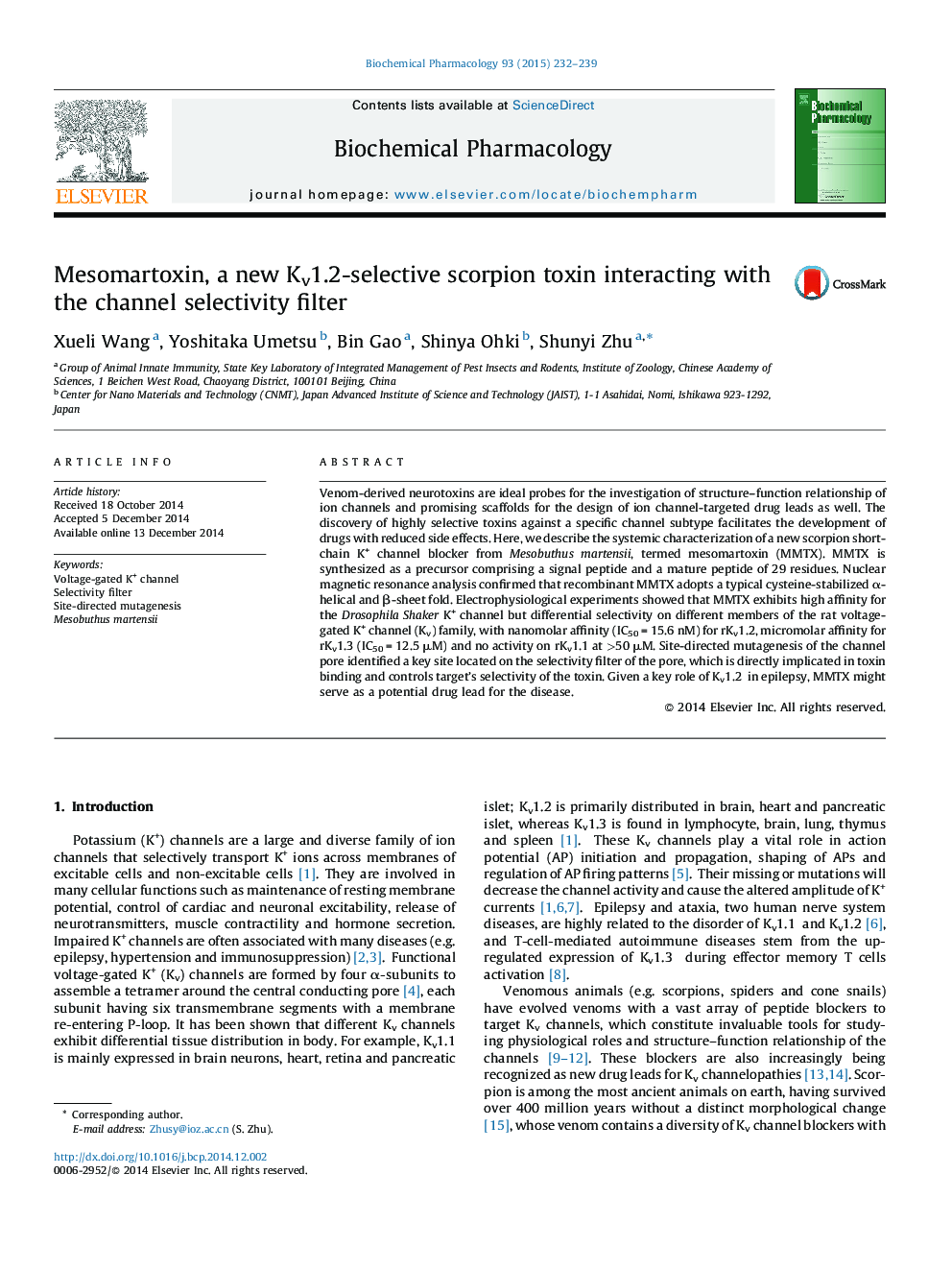| Article ID | Journal | Published Year | Pages | File Type |
|---|---|---|---|---|
| 2512166 | Biochemical Pharmacology | 2015 | 8 Pages |
Venom-derived neurotoxins are ideal probes for the investigation of structure–function relationship of ion channels and promising scaffolds for the design of ion channel-targeted drug leads as well. The discovery of highly selective toxins against a specific channel subtype facilitates the development of drugs with reduced side effects. Here, we describe the systemic characterization of a new scorpion short-chain K+ channel blocker from Mesobuthus martensii, termed mesomartoxin (MMTX). MMTX is synthesized as a precursor comprising a signal peptide and a mature peptide of 29 residues. Nuclear magnetic resonance analysis confirmed that recombinant MMTX adopts a typical cysteine-stabilized α-helical and β-sheet fold. Electrophysiological experiments showed that MMTX exhibits high affinity for the Drosophila Shaker K+ channel but differential selectivity on different members of the rat voltage-gated K+ channel (Kv) family, with nanomolar affinity (IC50 = 15.6 nM) for rKv1.2, micromolar affinity for rKv1.3 (IC50 = 12.5 μM) and no activity on rKv1.1 at >50 μM. Site-directed mutagenesis of the channel pore identified a key site located on the selectivity filter of the pore, which is directly implicated in toxin binding and controls target's selectivity of the toxin. Given a key role of Kv1.2 in epilepsy, MMTX might serve as a potential drug lead for the disease.
Graphical abstractFigure optionsDownload full-size imageDownload as PowerPoint slide
